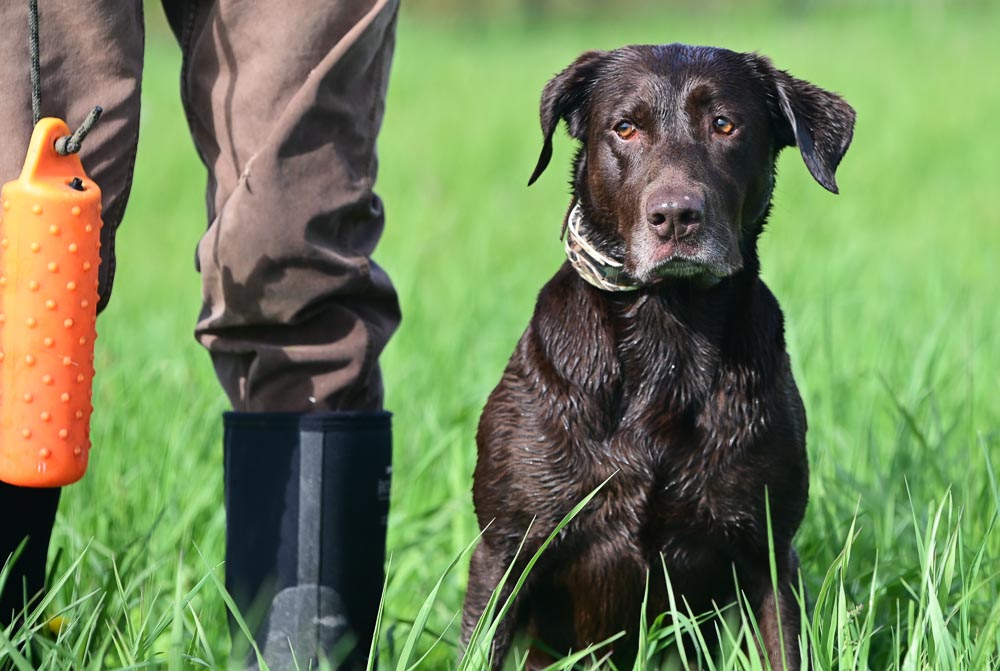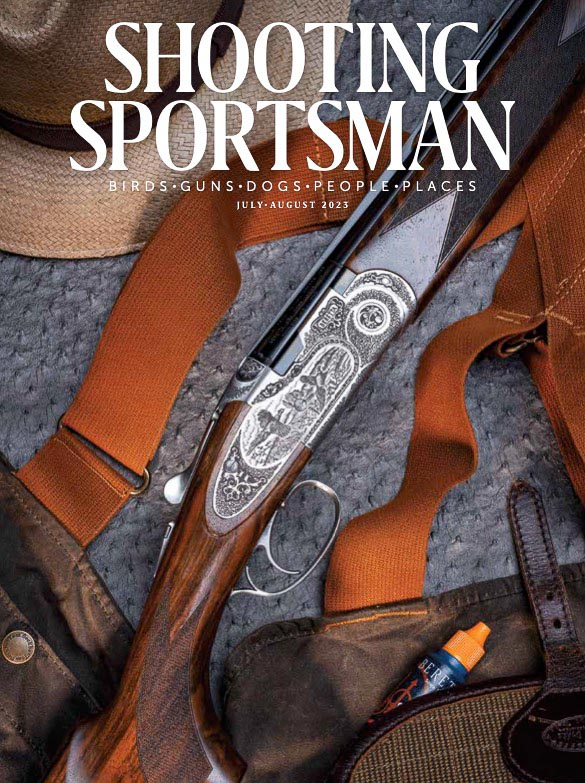By Jessie Richards
Photos by Jeffrey Karis
When a retriever owner asks me why his or her normally well-behaved dog breaks during a waterfowl hunt, my answer is short and simple: Because you’re letting it.
Breaking is the opposite of steadiness, and it’s no doubt one of the most irritating behaviors retriever owners typically deal with. You can read book-length explanations for why dogs break and the nuances of how to remedy this cardinal sin, but it’s easier to just be honest about what you’ve done—and not done—to create this problem. Do that, and the solutions usually become obvious.
Who’s Really in Control?
The first thing you need to ask yourself is whether your dog is always compliant with obedience commands. If your answer is “sometimes” or “most of the time,” that might be a clue to the root of the breaking problem.
At feeding time, do you let your dog attack the bowl before you’ve set it down? Have you ever gotten clipped by your dog bailing out of the back of your truck before you were ready to let it out? These problem behaviors exist only when you allow them to fester. If you don’t enforce control in the off-season, it’s silly to expect your dog to behave during a hunt.
Work on building good manners every day. Command your dog to sit and remain sitting while you set down its food bowl. Make it sit on the tailgate of your truck until you give the OK to get out. If your dog lives in the house, make it sit and wait for a release command when you open the front door.
Life is easier if you enforce these commands when your dog is a pup, but that doesn’t mean you can’t do some retroactive fixes if your pup has grown into a problem dog.
During Training
Off-season drills require steadiness if you have any hope of building a reliable retriever. You know this, but again, be honest with yourself about whether you’ve been allowing your retriever to creep “just a little” before you send it. Or whether your dog takes off “just a split second” before you release it for the retrieve. Little problems become big problems.
Here are three simple fixes to work into your marking-drill routines that can take the edge off a hard-charging dog that’s always testing boundaries:
• If your dog breaks—even if it’s barely noticeable—don’t let the dog complete the retrieve. Call back your dog immediately, bring it to heel, step off to the side a few paces and command, “Sit.” Then walk out and pick up the bumper, or have your thrower do it. Your dog must understand that there will never be a reward for breaking.
• Next, keep your dog sitting while one or more of your training partners run their dogs. The message you’re reinforcing is that something falling out of the sky is not necessarily your dog’s to get.
• When a bumper or bird is thrown, vary the amount of time between the fall and when you release your dog. It’s easy to fall into the cadence of bang-throw-go. Too much repetition makes your dog anticipate when it will get to go, and then things can get sloppy. The lesson here: The only cue to retrieve is your command, whether that’s one second or 10 seconds after the throw.

During Hunting
One seemingly obvious way to make your dog stay put during a hunt is to tie it to the blind or stake it out. If that’s your solution, that’s your choice, but I’d point out that when you do this, you aren’t really addressing the problem. And you definitely can’t say that your dog is in control.
A dog that is rock steady during training can get caught up in the excitement that comes with duck calls, gunshots, birds hanging over the decoys and all the other fun chaos that comes with waterfowling. My suggestion (and I’d say practically a requirement with a young retriever) is that you set your gun down and let your hunting partners do the shooting the first couple times out. One reason a dog might break is that it knows when you’re paying attention and when you’re not. When you’re shooting, you’re not focused on the dog.
Curing breaking with an e-collar is another obvious solution. This is only fair if your dog knows what’s expected. Do not take your young or barely trained dog out on opening day and start smashing the e-collar transmitter button in hopes that the dog will get the message during on-the-job training. It’s more likely you’ll confuse and scare your dog and possibly turn it off from hunting altogether.
Another thing about e-collars if you’re new to their use is that the little low-level nick that you use during obedience training might not be enough to get your dog’s attention during the excitement of a hunt. Be aware that if, on a scale of 1 to 10, your dog responds well to a 2, you might need to ramp up to multiples of that to make your point when your dog’s adrenaline is pumping.
So why does your dog break? You should be able to figure that out. But if you anticipate how breaking could become a bad habit and if you proactively enforce obedience commands ahead of time, it’s a question you won’t have to ask.
Buy This Issue!




